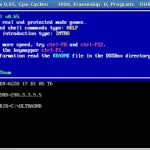Web site: xenproject.org
Category: Machine Emulators
Platform: Linux, BSD, Solaris
License: GNU GPL
Interface: CLI
Wikipedia: Xen
First release: 2003
Xen – an open-source virtual machine monitor (Hypervisor), developed at the University of Cambridge and currently being developed by XenSource.
Its task is to manage the cooperation of virtual machines running in its environment, in particular to ensure the mutual separation of virtual environments while maintaining their maximum efficiency. The advantage and reason for Xen’s popularity is that it takes up relatively few hardware resources.
Operating systems running under its control in the so-called paravirtualization mode must be appropriately modified (ported to a special Xen architecture), which is why it is suitable for hardware virtualization for systems with available source code (mainly FLOSS).
Currently, it supports Linux (since the 2.4 series), NetBSD, Plan 9 and OpenSolaris (reimplementation under the CDDL license known as xVM), support for FreeBSD is also being implemented.
Xen 3.x can supervise the operation of operating systems in multiprocessor versions (up to 32 processors) on both 32-bit and 64-bit Intel and AMD processors. On 32-bit machines, Xen uses the PAE technique to address large amounts of memory (it is also possible to run without PAE on 32-bit machines, but with some limitations). On 64-bit machines, both 64-bit and 32-bit systems can be virtualized. Xen can use hardware assistance to work in full virtualization mode, for example on Intel processors equipped with Virtualization Technology (abbreviated as VT, codename: Vanderpool), and on AMD processors with analogous technology (AMD-V, codename: Pacifica), you can run operating systems without modification and performance loss.
Supported architectures include Intel IA32, AMD64/Intel x86-64, and Intel Itanium (IA-64). A Xen subproject is also being developed to run on the ARM architecture. In the past, there were also versions available for the PowerPC architecture, but due to lack of interest, the project was abandoned (PowerPC servers, usually IBM, usually have their own virtualization mechanisms).





